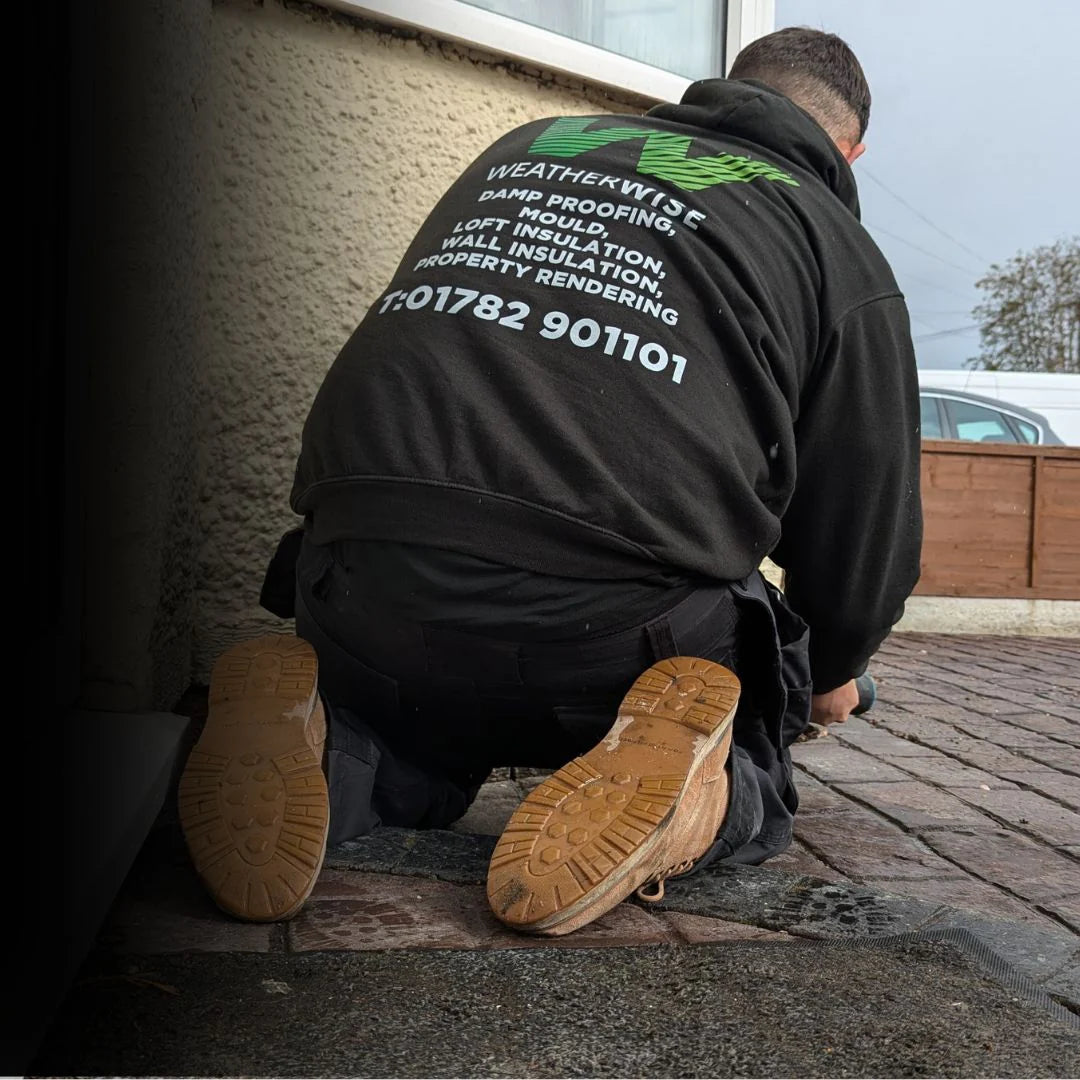🧱 What’s That Damp Patch on Your Chimney Breast?
If you’re seeing staining, peeling paint, or mould on your chimney breast wall in Widnes, you're not alone.
This is one of the most common internal damp issues we see in older properties across the area — and it's often misdiagnosed.
Many people assume it’s rising or penetrating damp, but in reality, it’s often caused by hygroscopic salts, bridging plaster, or poor chimney ventilation.
🔬 Understanding the Real Causes of Chimney Damp
1. Hygroscopic Salts
Over decades of burning coal and wood, salts from the chimney gases soak into the masonry. These salts absorb moisture from the air, making the wall appear damp year-round — even when there’s no water ingress.
2. Bridging Plaster
Plaster that’s run down onto the floor can bypass a damp proof course (DPC), especially if it wasn’t cut back properly. This causes true bridging damp, often at low levels on chimney breasts or alcove walls.
3. Blocked Flues or Poor Ventilation
Redundant chimneys that aren’t capped and vented properly trap condensation inside. This moisture seeps into the surrounding masonry, causing black mould, flaky plaster, and musty smells.
🔍 Signs of Damp on Chimney Walls
-
Yellow/brown stains or tide marks
-
Black mould in chimney alcoves
-
Flaking paint or blown plaster
-
Damp or musty smell in the lounge or bedroom
-
Discoloured wallpaper over the breast
-
Efflorescence or salt deposits
In Widnes, especially in areas like Ditton, Appleton, and Farnworth, we frequently find these issues in 1930s semis, older terraces, and even modernised homes.
🛠️ How to Treat Chimney Breast Damp Properly
We don’t believe in one-size-fits-all treatments. Here's how we usually approach it:
✅ Test for salts – We check whether the wall is affected by moisture, salts, or both
✅ Assess plaster condition – If bridging is found, we strip and replace with a breathable plaster system
✅ Check chimney ventilation – We’ll advise whether vents or caps are needed
✅ Apply salt-inhibiting treatments – Before any re-plastering, we neutralise salt contamination
✅ Consider tanking – In more severe cases, we tank internally using breathable slurry systems
🚫 Why Quick Fixes Don’t Work
Painting over the stain, applying damp-proof paint, or sticking a dehumidifier in the room won't fix the underlying issue.
Without treating the source and the salts, the damp will return.
👷 Why Choose Weather Wise?
-
✅ Full chimney breast damp assessments
-
✅ Breathable tanking and re-plastering systems
-
✅ Members of the Damp Proofing Association
-
✅ Backed by the Federation of Damp
-
✅ Trusted by homeowners across Widnes and Cheshire
📞 Book Your Chimney Damp Inspection in Widnes
https://weatherwiseuk.co.uk/pages/contact
FAQs
Can I just paint over the damp patch?
No — not until the cause is treated and salts are neutralised, or the damp will reappear.
Do all chimney breasts need tanking?
Not always. If the issue is ventilation-based or mild salt damage, plastering with a salt inhibitor may be enough.
Is chimney damp dangerous?
It can lead to black mould, which is a health risk — and if the timbers behind are wet, it could cause rot over time.



